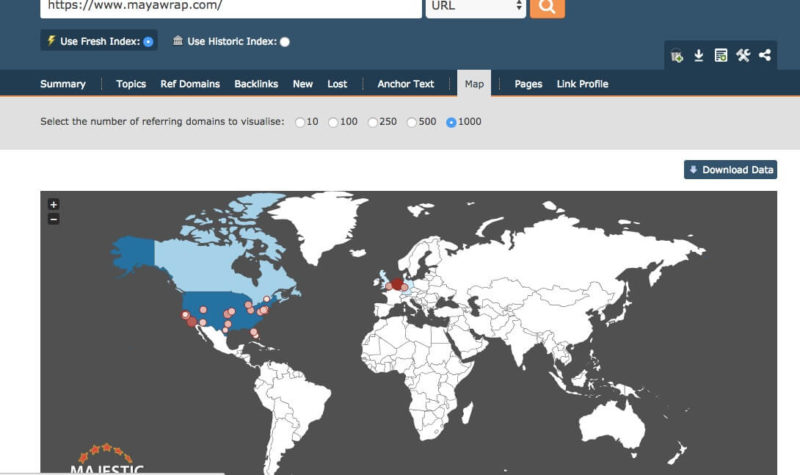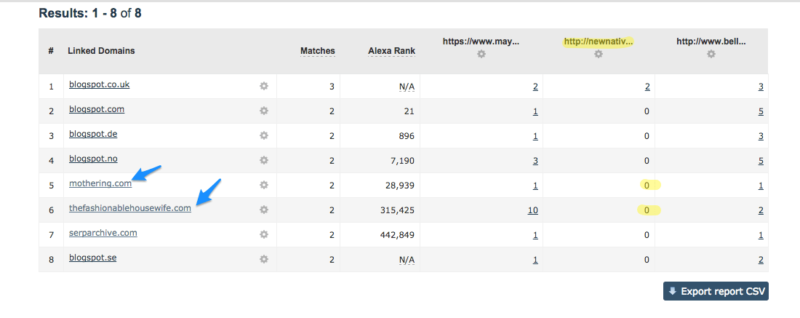How To Learn From Your Competitors Without Copying Them
Link Week Columnist Julie Joyce gives insights into five ways to use competitive analysis to help build out a new link profile -- without blindly copying it.
My last post brought up some great questions about using competitive research for link building. My main point was that blindly copying a competitor’s link profile could be a really bad idea, depending upon the links they have.
I do not personally dig through competitors’ profiles to find links that they have that I don’t have, because I’m not a big fan of copying people. But there were a few comments on the article and on social media that made me think more deeply about how you can best use competitive analysis to your advantage without directly copying someone else’s link profile.
I’d also like to go ahead and mention that this article is geared towards people who may need help figuring out what to do in terms of generating links. It’s not intended to blow the minds of veteran link builders and SEOs — it’s intended to help the same kind of people (who usually have no link building experience) who routinely email me and ask questions about what they should be doing when they can’t hire a professional.
Here are five ways to learn from your competitors without copying them:
1. To Start Out As A New Site
What are the links that I should be getting?
Which are the authorities in my niche?
Launching a brand new website is a situation where I think it’s warranted to spend a lot of time doing competitive link analysis. Torben Grue had a great comment about this:
“It’s obvious that you should not copy any links blindly, but when a startup is launching a new service, contacting sites and blogs where your competitors already have been mentioned or gotten a link from is a great starting point.”
As someone who generally works with established sites, that’s a point I hadn’t really considered when I wrote my article. It’s tricky to know where you should be building links if you don’t yet have any.
Example: Let’s say you are about to unveil your new site, and you sell custom-made baby slings. In case you don’t know what that is, here you go:
Let’s look at some relevant sites that show up linking to other sites in that niche, using Majestic’s Clique Hunter.
I entered the following domains for this:
- https://newnativeinc.com/
- https://www.mayawrap.com/
- https://www.bellebabycarriers.com/
The Matches column tells you how many times a link is found for the sites you enter. Since I’m looking at three sites for my analysis, I’d want to examine the ones that link to all three first and go on from there. (In this case, the only one linking to all three sites is a blogspot.co.uk domain, so I’d start digging into the twos.)
Right off the bat, I see a few great sites that are relevant and authoritative. My thinking here is that I’d probably have identified those sites as authorities in the niche even if I hadn’t run the tool, so I’d happily say that these would be great sites to reach out to in hopes of getting links for my new site.
2. To Identify Trends
Which types of sites tend to link to your competitors?
How are they linking? For example, do they use a lot of image links, or are they mostly nofollowed?
I’m very fond of using general trends rather than concrete numbers in some cases.
I’d rather see that a site tends to mostly attract links from health and beauty sites than calculate that a site gets links from Domain Authority 30 and up, because I am more concerned with relevancy than numbers. Otherwise, I fear I’d be losing out on a lot of opportunities with sites that are new and don’t yet have that magic number, and I fear that I’d potentially sacrifice relevancy for good metrics. Hey, it happens!
Example: Using the same baby slings site as our new one, let’s use Majestic’s Compare Topics tool.
You can see that shopping is a very popular type of niche for this industry. That’s probably pretty obvious information, of course, but still, you’re confirming it here. Home/family sites also seem to be well represented here. Thus, you’d probably want to focus on outreach to sites in those areas.
Even a basic glance at the Site Explorer for a site or two is helpful, though. You can see info about redirects, images, text links, followed vs. nofollowed, etc.
I also like to look at the Map here:
It doesn’t appear that they’re getting many links in Brazil, but they are getting them from the U.S. and Europe. That’s the kind of thing I’d keep in mind so I didn’t raise any flags by actively pursuing links from Japan, for example. This is common sense for most of us, but hey, not everyone has common sense all the time!
3. To Identify Links You DON’T Want
What are the sites that link to your competitors but look spammy?
Are any of them deindexed or penalized?
We have a “Do Not Contact” database that is a lifesaver. If I run across a site that looks penalized or deindexed, I’ll add it to the database. If I am doing competitive research and check out a competitor’s newest links and the sites are spammy, I’ll add them, too.
It’s very important to understand which links you don’t want. Gone are the days of thinking that any free link is a good link.
For the record, I’m skipping an example here so that I don’t inadvertently offend anyone. Sometimes, a site gets briefly deindexed for a robots.txt error or some other reason and it’s back in the index the next day. Some penalized sites can recover, of course, but the point here is that it’s a good idea to have a list of sites you want to stay away from for the moment.
4. To Identify Missed Opportunities
Are there authority links that everyone else has but you don’t?
I once hassled an editor about how he had not asked me to contribute to his SEO news site because at the time, I was writing for all the ones I wanted to write for except his. Taking that approach to competitive link analysis can show you the people you want to reach out to.
Example: Thinking along the lines of what I said up above in the first example of starting a brand new site, let’s dig for the authorities in the baby sling niche and pretend that our site is actually the existing site https://newnativeinc.com/.
Which authority sites don’t we have? Again, we’ll use the Clique Hunter.
Mothering.com and TheFashionableHousewife.com look pretty good and authoritative; since they link to the others, they might be willing to link to me.
Now, this is where it gets tricky: I’m talking about a few sites. I’m not saying go find every good site that links to your competitors and try and get links there. If you want to do that, that’s your business — but to me, that is just creating a footprint, and I hate that. Like everything else, be selective and don’t just grab everything you see.
5. To Find What’s Lacking In Terms Of Content, And Create It
Mike Mardis had another great comment on my last article:
“I’m more an advocate of, find out what kind of content your audience likes, figure out how they search for it, find a niche in that vertical that is lacking, and create useful, cool content around it.”
I love this mindset! Find what’s missing. Sometimes, all that’s missing is a different form of content. Maybe a site has a fantastic article about how to build a chicken coop, but there’s nothing visual besides a couple drawings of plans. To me, that’s crying out for a video of someone building a coop. It’s begging for some photos of a coop project from start to finish.
Final Thoughts
To sum up, there definitely are good uses for competitive link analysis. I don’t think that copying someone else is the best idea, but plenty of people do it and probably do very well. It’s just not my thing; I’d rather get the links others don’t have.
Competitive analysis can be a godsend if you’re starting out, but it can also lead you to a void that needs filling. Some of those links might be the best ones you get, and hopefully not ones that can be easily copied.
How else do you use competitive analysis in your link campaigns?
Opinions expressed in this article are those of the guest author and not necessarily Search Engine Land. Staff authors are listed here.
Related stories
New on Search Engine Land






